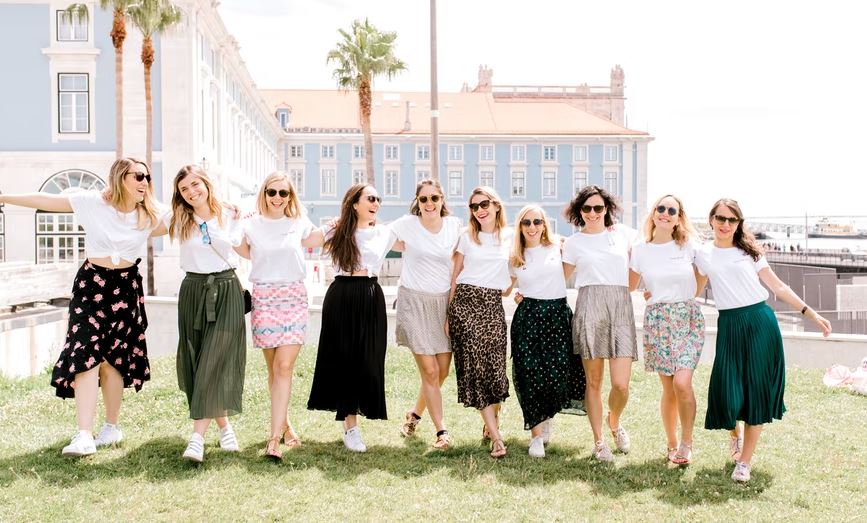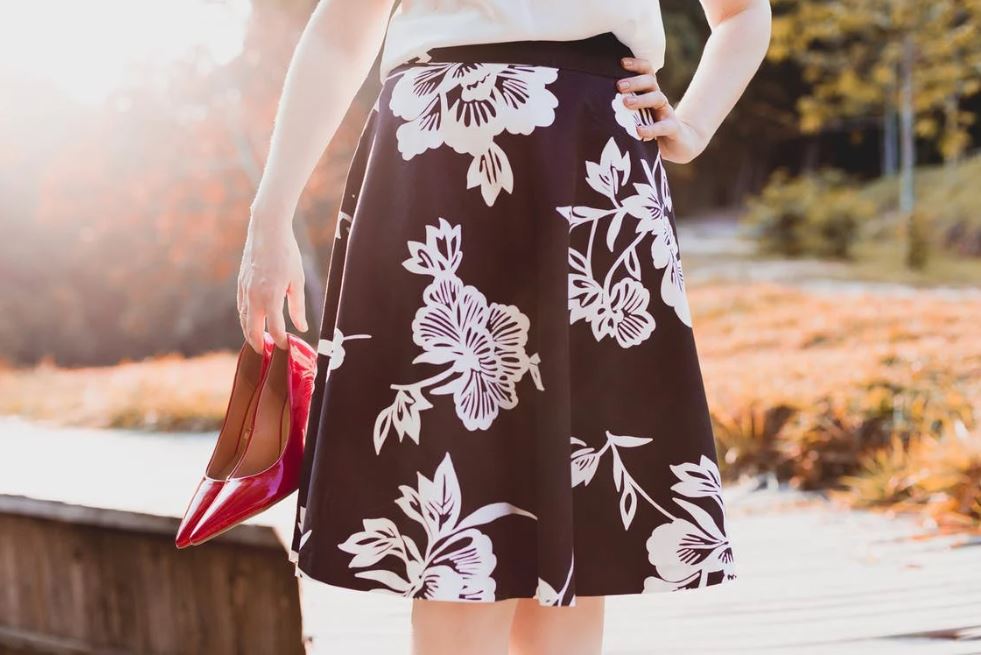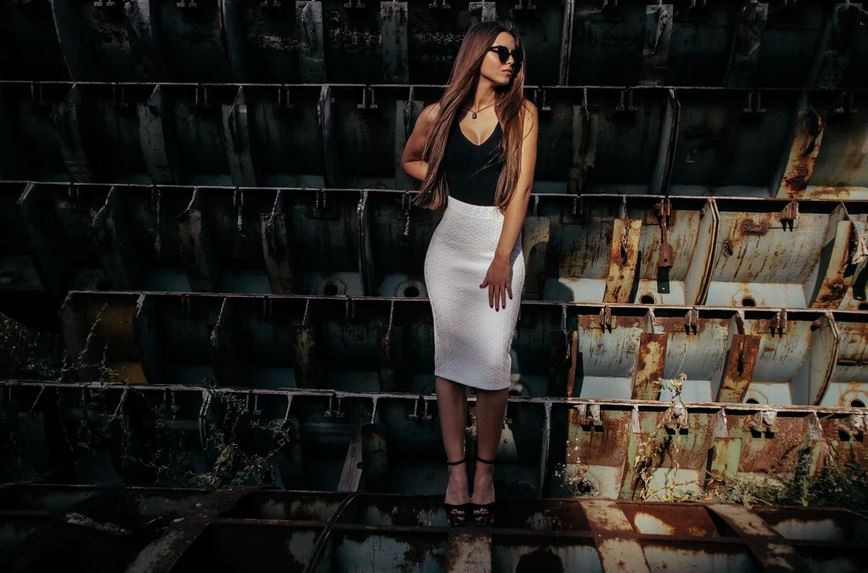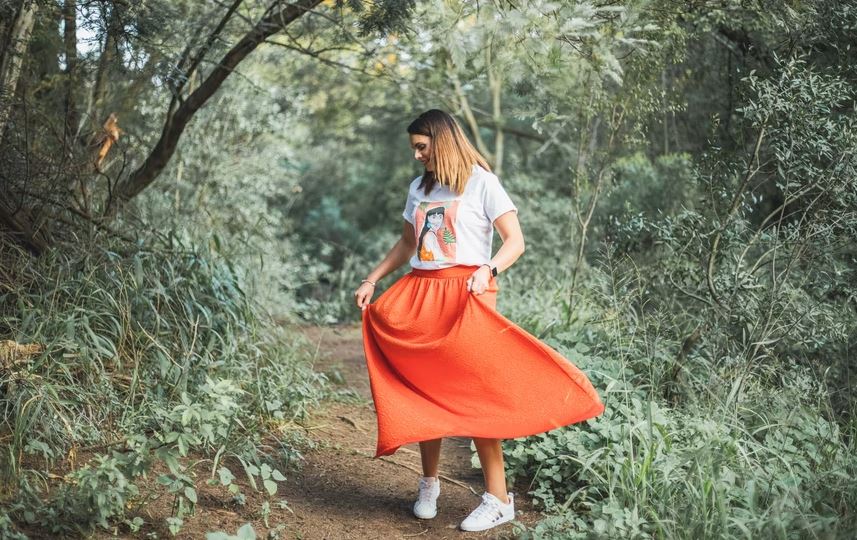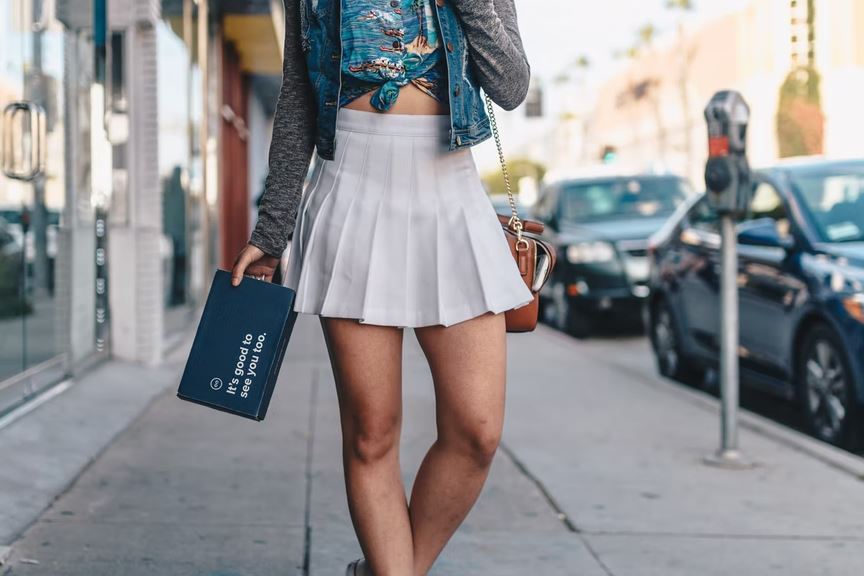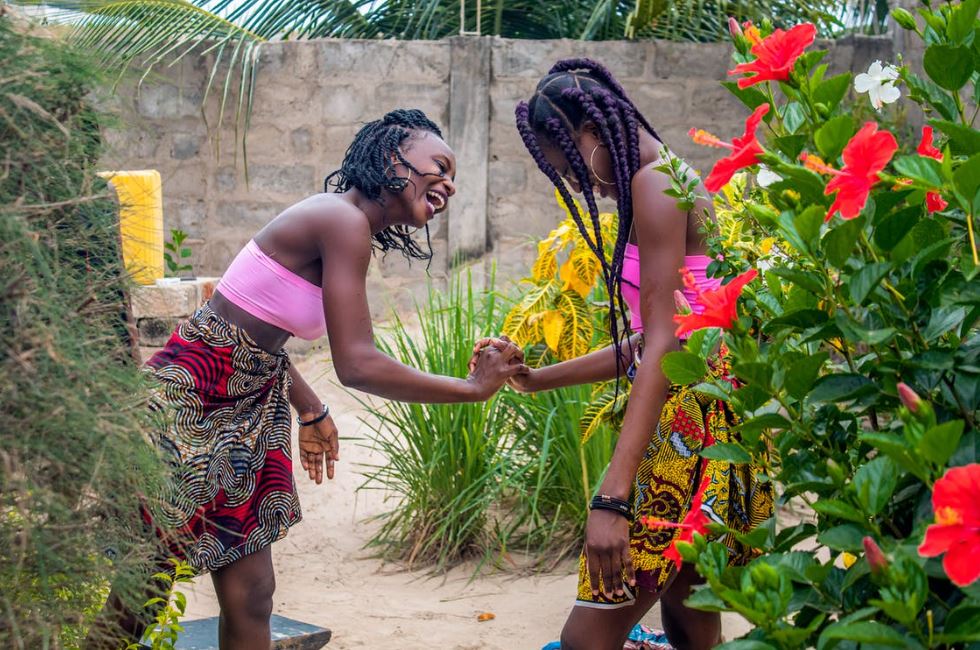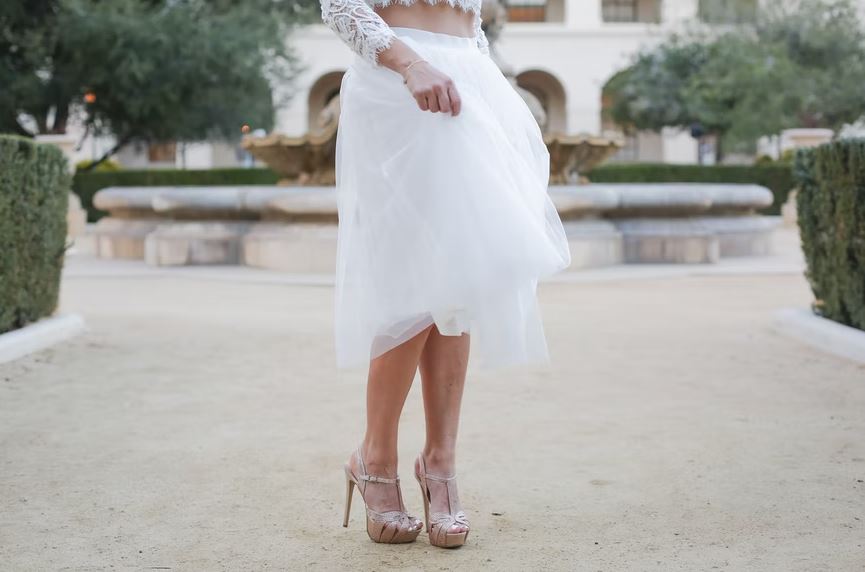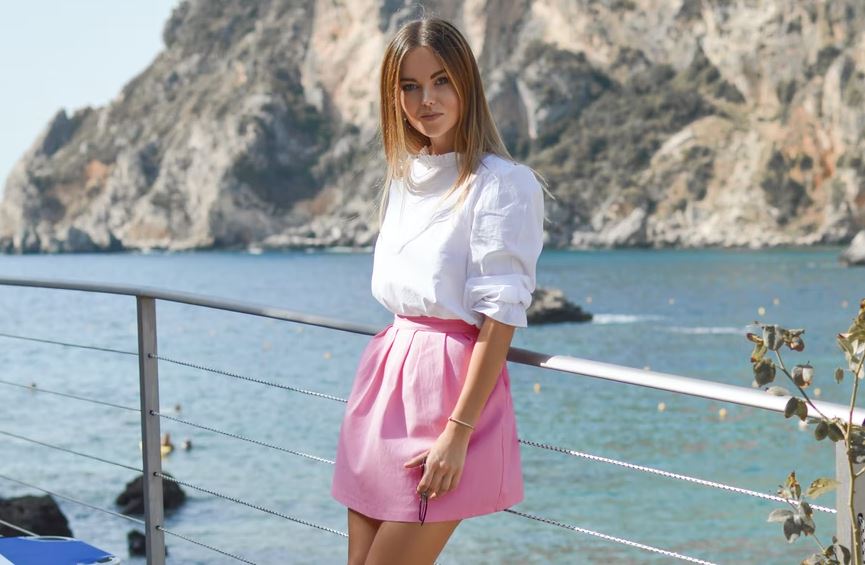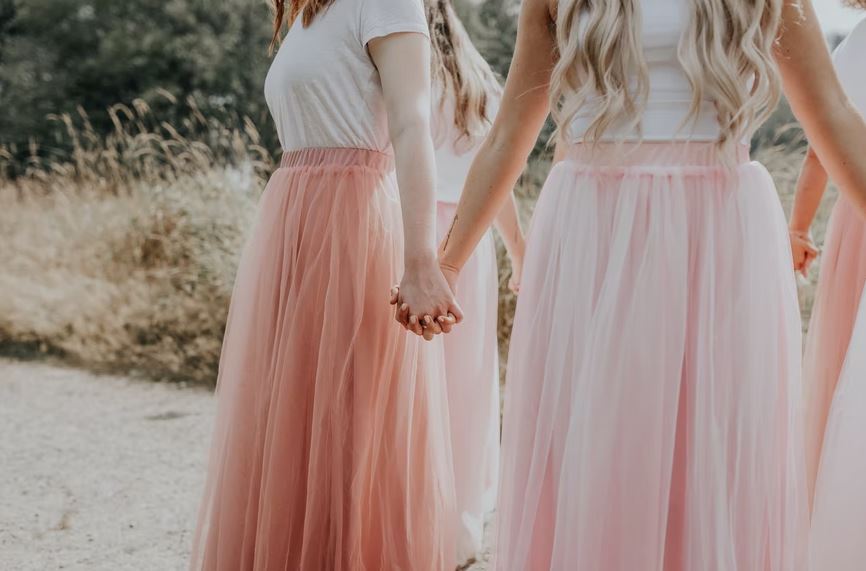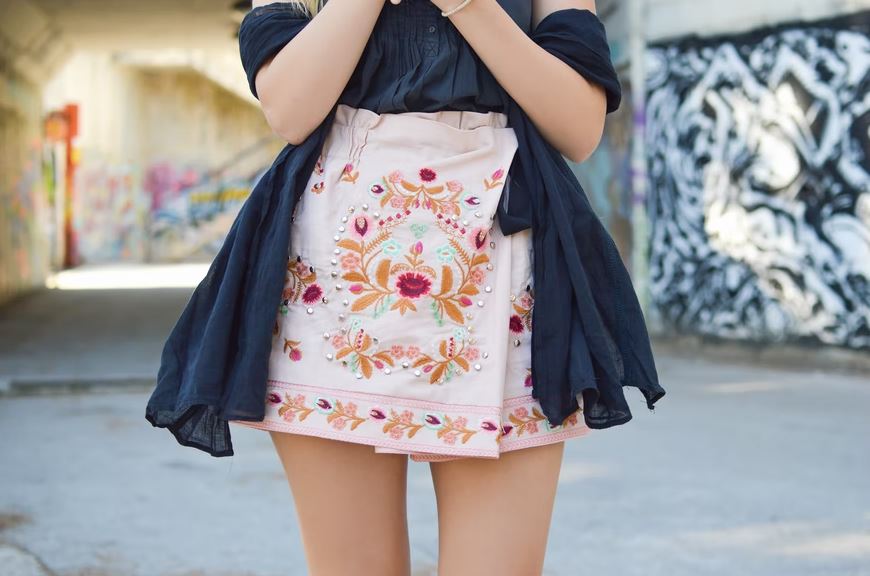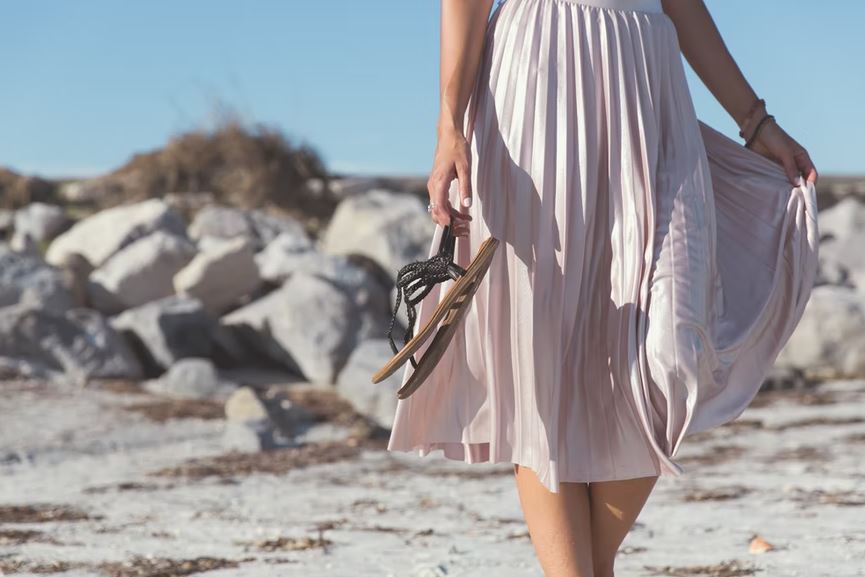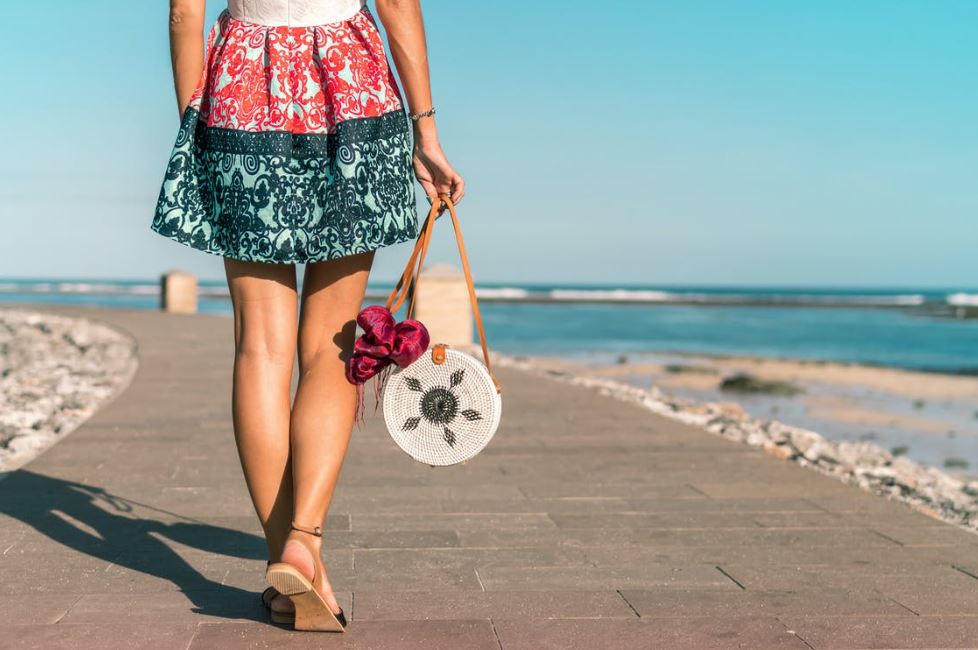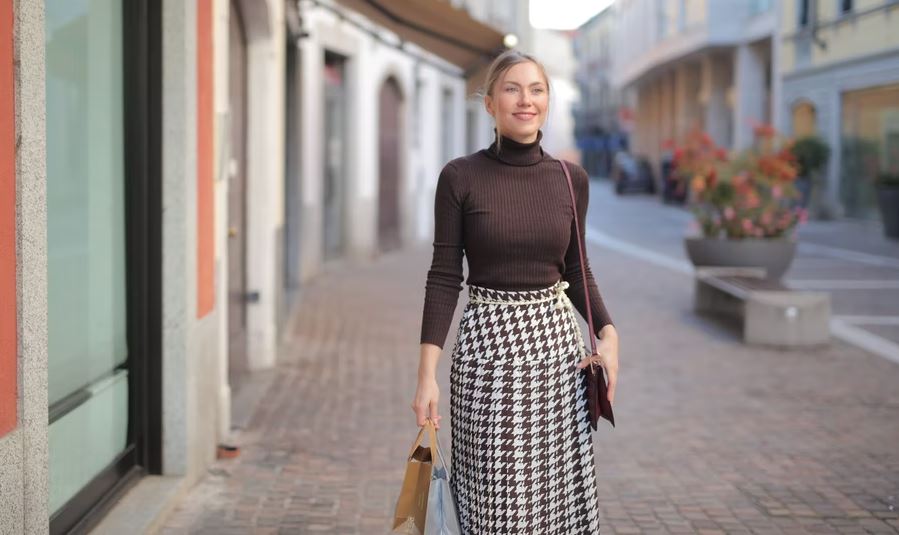A skirt is a garment that is mostly worn by women in the lower part of the body. It covers the person from waistline to downwards. Skirts have different types and can be used for formal events as well as casual days. They have been around for centuries, and their types have evolved as the length changes or the fullness of the skirt varies. Wearing a skirt can emphasize a waistline or change the hemline.
When you go shopping for a skirt, there are many different kinds to choose from, which can provide you with various outfit styles for different occasions. Most of us may own several skirts, but did you know that there are many different types of them. Maybe there are some types that you haven’t tried wearing yet, or you have seen but don’t have any idea what it is called. If you want to learn more, you’re in the right place. In this post, we are giving you an infographic on the different types of skirts.
A-Line Skirt
An A-Line skirt has a flare, which resembles the capital letter A. It is among the most recognized types of skirts and mainstream outlines, among other types. It can be said as a pear-shaped skirt. It is usually knee-length and mostly forms a triangular shape when laid flat. It can also be sewed easily, making it one of the widely available skirts in the market.
It is a perfect skirt for people with pear-shaped figures. It flares out gently from the waist and does not cling to the hips, making it flattering. Also, it does not need slits in the side or back for a person to easily walk when wearing one due to its flared shape. A-Line skirts are also mostly fitted at the waist and, as such, need shaping in the form of darts or waistband. The waistband can be high, low, or elasticized.
Fitted Skirt (Pencil Skirt / Tube Skirt)
Based on its name, a fitted skirt is form-fitting from the waist to the hips, mostly with the help of darts. Under this category are the pencil skirt and tube skirt. A pencil skirt is cut straight down to the desired length and forms a rectangle when laid flat. Some are also tapered inwards at the knee. Tube skirts, on the other hand, are usually made of stretchy fabric. A fitted skirt is a very figure-flattering type of skirt. Therefore, if you want to flaunt your curves when wearing a skirt, this is the best type that you can wear.
Gathered Skirt / Full Skirt
A gathered skirt or a full skirt is usually a straight piece of fabric with the top edge gathered using an elastic waistband, a drawstring waistband, or a plain fitted waistband. An example of this type of skirt is a bell skirt that has slight gathers at the waistline with a pronounced hemline, standing stiff by using crinoline petticoats. Another example is a dirndl skirt, which is a gathered skirt with the gathers fitted into a flat waistband.
Miniskirt
A miniskirt is a short skirt that is around 10 to 17 inches in length. Some people also call it a bondage skirt or a Pelmet skirt. There is also an even shorter version of a miniskirt, which is called a micro miniskirt, usually about 10 inches or shorter. A miniskirt is iconic and associated with the 1960s. It was made popular by dress designer Mary Quant. It is an economical type of skirt as it uses very little fabric. Traditionally, miniskirts are fitted but can also be circular or flared. For a casual look, wearing a mini denim skirt is a great option.
Flared Skirt
This is a type of skirt that is quite fitting at the waistline and hipline but has a flare at the hemline. There are also some flared skirts that have a flounced hem. It is a circular ruffle added to the hem of the skirt for a more stylish look. It is a great type of skirt to wear if you are attending formal or semi-formal events.
Draped Skirt
This type of skirt has fullness gathered or draped on one side. It is also sometimes referred to as a Sarong draped skirt. It is a square piece of fabric that can be wrapped around the body to make a skirt. It can either be short or long, depending on your preferences.
Layered Skirt
Layers of fabric are used to add plumpness and swing to a layered skirt. It is usually found in most women’s clothing designs, giving them a free, floating, and bohemian style. Layered skirts are flattering for a lot of body shapes, especially when the skirt is made using a soft floating fabric with a drape-like rayon.
Circle Skirt / Circular Skirt
This is also sometimes referred to as the skater skirt. It is cut in a circle and attached to a waistband that sits exactly on the waist of the wearer. It forms a circle when it is laid flat. This type of skirt takes a fair amount of fabric. It can also be made into different lengths, from long and flowing to short and sassy. It is a great skirt of choice for active outdoor wear ad mostly used for tennis skirts. Some variations of the circle skirt include a half circle skirt or a double circle skirt for a maximum flare.
Gored Skirt
Gored skirts are paneled types of skirts that have areas of texture, offering totality to an A-line outline or silhouette. An example of this is a petticoat skirt design that is a framed skirt. The flare of the skirt can start from thigh-length or knee-length to give the skirt extra fullness.
Godet Skirt
This is a triangular piece of fabric that is inserted into the body of the skirt to provide fullness. It is used on straight-cut or A-line skirts that you want to look fuller when worn. It is best used for a skirt that is a bit longer.
Trumpet Skirt
This type of skirt is fitted near the waist up to the bottom hem, then flares outside near the hem. One example of a trumpet skirt is the mermaid skirt or fishtail skirt. It provides the wearer an hourglass shape, and the tailpiece flares out at the bottom of the skirt. Most of the time, trumpet skirts are used for wedding gowns, with the back becoming a train. It is best paired with a fitted bodice to accentuate its design. If you want to create an hourglass shape, this is a great skirt of choice.
Wrap Skirt
This is a one-piece type of skirt that is folded over the body, overlapping, covering, and attached with the use of ties or button closure. It is a very flattering type of skirt as it wraps around your figure and ties or fastens at the waist. It comes in various lengths and fits any occasion. However, these skirts take more fabric to make but are an easy sewing project, especially for beginner sewers.
Divided Skirt
This is the type of skirt that is divided into two parts, like pants. It features wide flares divided into two legs. This is a great type of skirt if you are not comfortable wearing the other types or if you are more into wearing pants but need to wear a skirt for a special occasion. Wearing a divided skirt is comfortable as it is like wearing a pair of pants that is loose.
Pleated Skirt
The pleated effect on this type of skirt varies with the size of the pleats used. Knife pleats are those that sit flush with the body of the skirt, which are flattering. There are also different lengths of pleated skirts with various size pleats. The pleats also follow a pattern. Once the size of the pleat is chosen, the same size is followed to finish the skirt.
Pleated skirts are usually made using synthetic fabrics that can be pressed permanently so that the pleats will not fall out when washed and ironed. This way, it will not be your job to iron back the pleats every after wash.
Asymmetrical Hem Skirt
This type of skirt features a hem that looks unbalanced or asymmetrical. One example of this is a handkerchief skirt that looks as though you are holding down tissue or a handkerchief squeezing its middle, with its sides hanging down. Asymmetrical hem skirts are usually cut diagonally across the body, keeping one side of it lower from the other. However, it is different from a high-low skirt where the asymmetry is at the front and back. This type of skirt can be flared out, tight, or billowing.
Bubble Skirt
A bubble skirt puffs out at the hem as the fabric is gathered onto a band instead of a turned-up hem. The band is kept under the skirt so that the top of the skirt bubbles over the band. This type of skirt uses a lot of fabric as, essentially, you have two skirts. One is a straight skirt underneath, and then the gathered part on the outside. Bubble skirts are a fashion piece that tends to come and go instead of becoming a wardrobe staple. Also, most of them are cut above the knee, as any linger adds lots of volume to the skirt.
Balloon Skirt
A balloon skirt features a fitted waistline and hipline. However, the fullness at the hem of this skirt is gathered into a band like a bubble skirt.
Yoke Skirt
This type of skirt uses a yoke effect at the top and on the waistband, which makes a slimming look for the yolk skirt, then the skirt is underneath. It hugs the figure, and the skirt is gathered or eased onto the yolk to complete the design. The yoke can either be narrow or much wider. It is also cut on a curve so that darts won’t be needed to shape at the back. The yoke can also be round, asymmetrical, or triangular. It is a very formal choice of a skirt to wear in offices and on other special occasions.
Tulip Skirt
A tulip skirt is based on a straight skirt design. However, it features an irregular hem edge. It gives the skirt an inverted or rearranged tulip bloom design. The edges of the skirt can be bound in a bias tape to pick up the overlapped detailing. It is wider in the middle compared to the hem or waist.
Tiered Skirt
A tiered skirt features a flare in three sections, which are layers joined together to create fullness. Mostly, the flares are in the upper, middle, and lower parts of the skirt. It is a very casual and fancy type of skirt that can either be long or short. Wearing it with a short or tube top makes it more stylish.
Skirt Names as Per Length
Did you know that skirts can also be classified based on their lengths? Depending on the taste of the wearer or the style prevalent, or even the cultural influence on the wearer or on the body shape, the length of the skirt can vary greatly. Here are the different skirt names as per length:
- Micro Mini: This skirt length ends an inch below your bottom. It is extremely short, at about 8 to 10 inches.
- Mini: As mentioned earlier, a miniskirt is around 10 to 17 inches long and mostly ends at mid-thigh.
- Above Knee Length: This skirt is just an inch or two longer than a miniskirt, ending just above the knee.
- Knee-Length: This skirt ends at the exact height of the knee.
- Cocktail: A cocktail skirt’s length ends anywhere between just below the knee to above mid-calf.
- Midi: A midi skirt’s length ends somewhere between the knee and the ankle.
- Maxi: A maxi skirt’s length usually ends between the bottom of your mid-calf to the lower calf. Sometimes it is around 10 inches from the floor.
- Full–Length: A full-length skirt is seen 1 inch above the floor.
- Floor Length: This type of skirt apparently grazes the floor.
Conclusion
There are indeed many different types of skirts for various fashion styles and occasions. A skirt is a highly flexible choice when it comes to picking the right outfit. It can provide you with looks ranging from the most professional to the casual ones. Since they are available in different styles and lengths, they have also become one of the most popular items in any average wardrobe. Choosing the right type of skirt with the right style for your body type can provide you a wide range of looks within the collection in your wardrobe. We hope this post helped you learn more about the different types of skirts.

